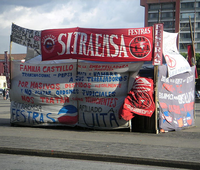Sixty-three years ago, the United Nations’ labor agency, the International Labor Organization (ILO), adopted its most basic treaty, Convention No. 87 on the Freedom of Association and Protection of the Right to Organize, to advance the human rights of workers. The following year, it added Convention No. 98 on the Right to Organize and Collective Bargaining. These two conventions, neither of which the United States has ratified, form the bedrock of human rights for workers, and in 2011 the rights they protect are the most abused in the world of labor.
Many human rights abuses confront workers today, from slave labor to child labor, discrimination, horrendously dangerous workplace conditions and below-survival wages. But the root of all these conditions is the relative powerlessness of workers when confronting labor rights violations by employers or governments. Consequently, associational rights, including the right of workers to associate freely, to bargain collectively and to take collective action in pursuit of their interests, constitute the most significant human rights to be restored or gained in today’s troubled global economy.
In the immediate post-World War II period, the perceived rising threat of radical socialist or communist movements led to two separate trends in the West. Most of Western Europe tried to satisfy labor unrest by legislating protections such as those found in Conventions 87 and 98. The U.S. tried to prevent labor from gaining political and economic power by legislating restrictions on labor organizing and collective bargaining. Despite the different approaches, the strength of organized labor in both the U.S. and Europe steadily declined over the past half-century, falling in the U.S. from about 35 percent of the working population at the time the Taft-Hartley Act was passed in 1947 to 9 percent today.

